Zwei Wölfinnen Esther Schipper, Berlin, 2024

Zwei Wölfinnen, installation view Esther Schipper, Berlin. Photo: Andrea Rosetti, 2024.
Zwei Wölfinnen, is a sculptural pair of she-wolves: one appears as a taxidermized animal, the other is formally based on the iconic classical bronze of a she-wolf in the Capitoline Museums in Rome.
Fierce creatures looming large in the humanity’s imagination, wolves are endowed with distinct attributes in different cultures: seen as brutal and unrelenting, doltish or menacing, greedy and destructive, or implicated with witchcraft and magical transformation (werewolf) in some, others associate the animal with independence and freedom (lone wolf), courage and strength, cunning and intelligence. A recurring motif has the wolf turn protector and caregiver of a human infants: most famously, Zoroaster, Romulus and Remus, Rudyard Kipling’s fictional character Mowgli—all were supposedly suckled by a she-wolf, raised by a pack of wolves.
Fierce creatures looming large in the humanity’s imagination, wolves are endowed with distinct attributes in different cultures: seen as brutal and unrelenting, doltish or menacing, greedy and destructive, or implicated with witchcraft and magical transformation (werewolf) in some, others associate the animal with independence and freedom (lone wolf), courage and strength, cunning and intelligence. A recurring motif has the wolf turn protector and caregiver of a human infants: most famously, Zoroaster, Romulus and Remus, Rudyard Kipling’s fictional character Mowgli—all were supposedly suckled by a she-wolf, raised by a pack of wolves.
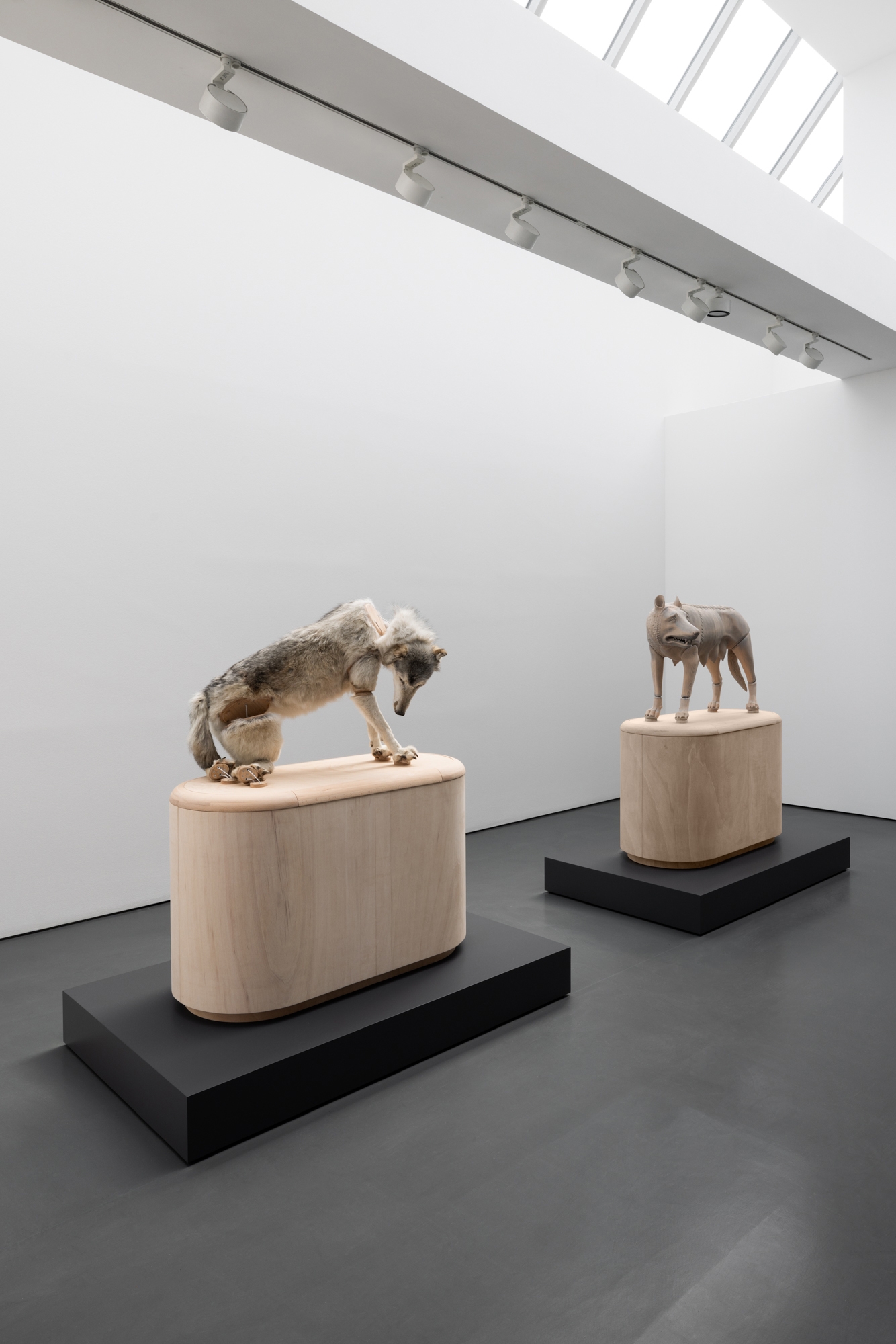
Zwei Wölfinnen, installation view Esther Schipper, Berlin. Photo: Andrea Rosetti, 2024.
Then the illusion breaks—as with all taxidermized animals on closer inspection—when we see the large-scale figures collapse and reconfigure, revealing the elaborate construction that enables their continuous movement. A further development of Bismarck's series of monumental collapsing sculptures presented in the artist's solo exhibition at the Berlinische Galerie in 2023, the new works emulate the mechanism of hand-held push-puppet toys with miniature animals. Yet, the collapse of the animal’s body into sections—and with it the dissolution of the initial illusion of the animal sculptures’ intactness—brings with it a heady mix of power, curiosity and, as with many contemporary encounters with animals, pity and perhaps shame.
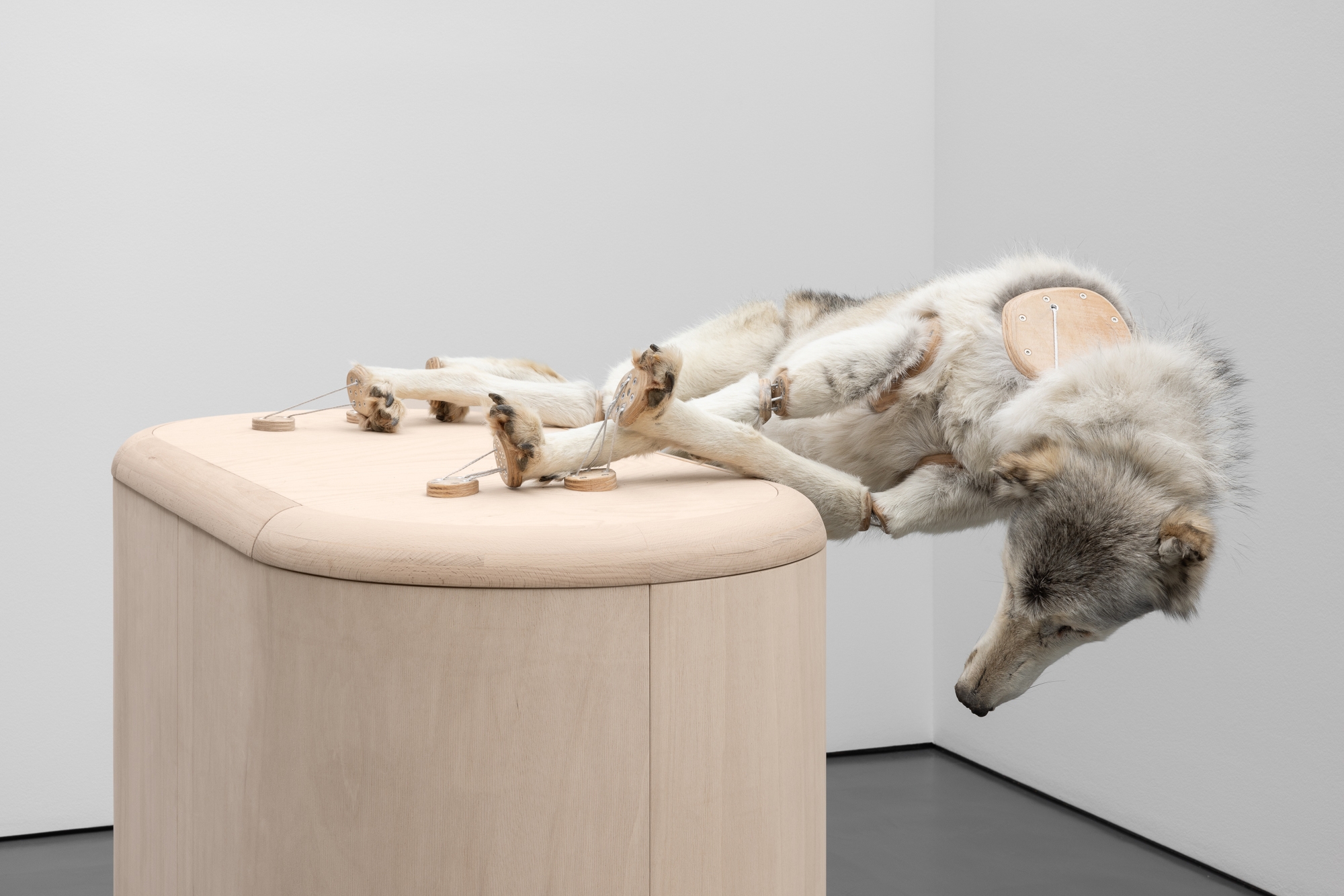
Zwei Wölfinnen (Im Wolfspelz), Photo: Andrea Rosetti, 2024.

Zwei Wölfinnen (Im Wolfspelz), detail. Photo: Andrea Rosetti, 2024.
The format of Julius von Bismarck’s sculptures—their echoing the toy’s construction, anti-naturalistic awkward motions, and even the characteristic round base as plinth—has an anti-heroic effect: the imposing figures’ continuous collapse is a choreographed study in powerlessness, turning the predator Zwei Wölfinnen (Im Wolfspelz) and the iconic cultural symbol Zwei Wölfinnen (Wilde Mutter) into jumbled dolls. But transformed in scale, the playfulness of its mechanistic source comes with a change in scale of the inferred violence. The laughter at the sculptures’ unceremonious collapse becomes a symptom of our ambivalence at taking pleasure from this destruction and, in this realization, the wider consequences of humanity’s relation to the world are revealed.
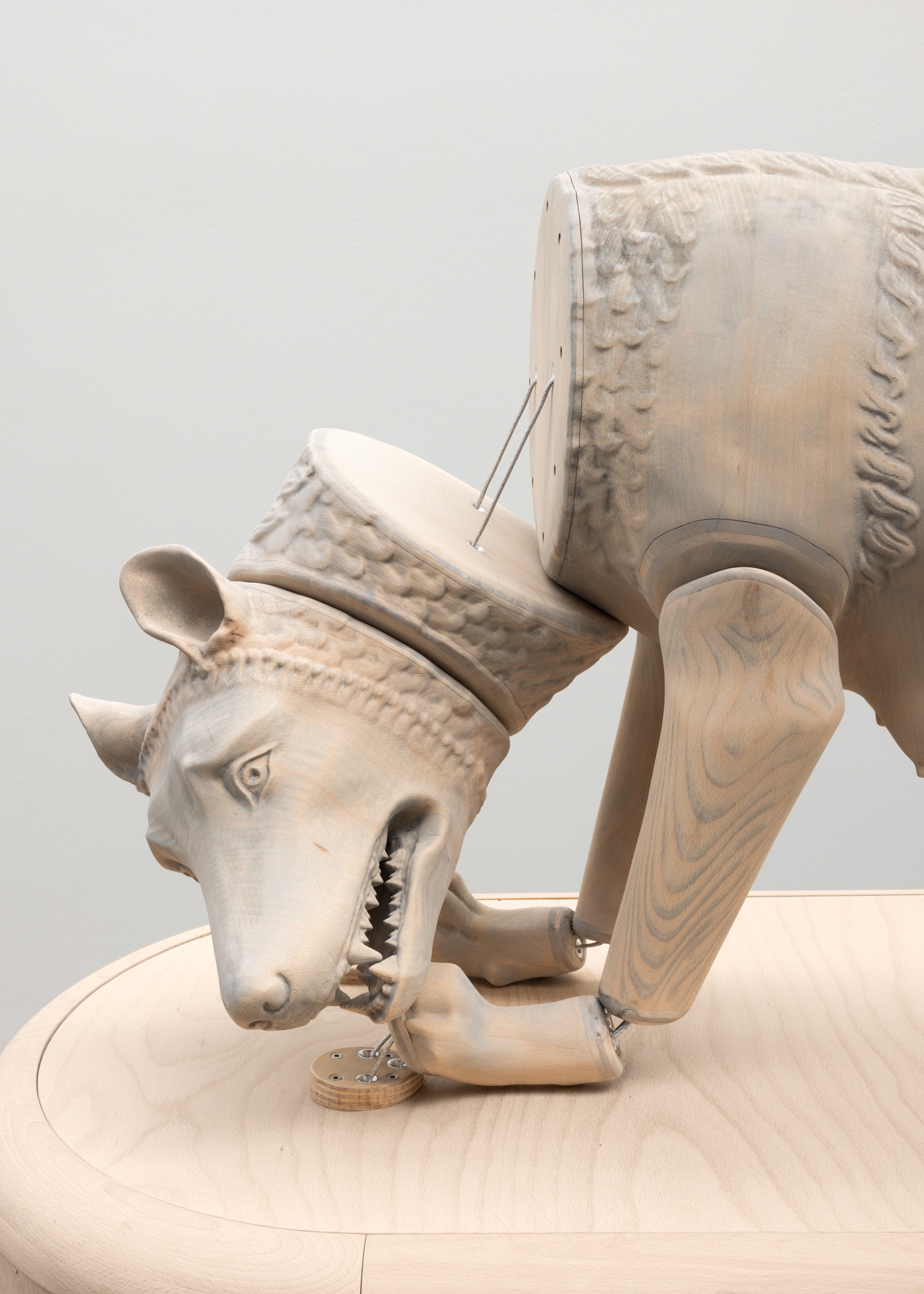
Zwei Wölfinnen (Wilde Mutter), detail. Photo: Andrea Rosetti, 2024.
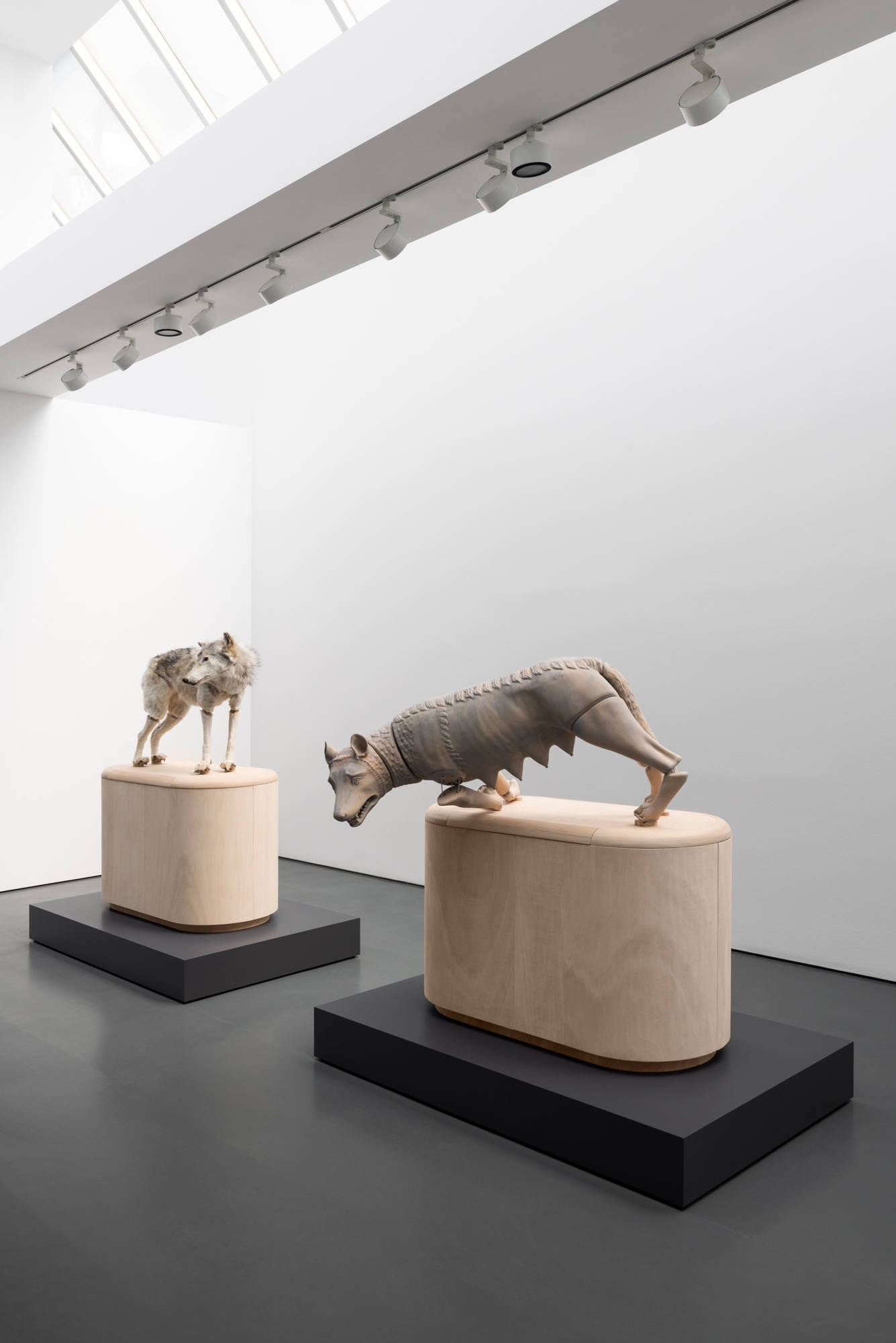
Zwei Wölfinnen, installation view Esther Schipper, Berlin. Photo: Andrea Rosetti, 2024.
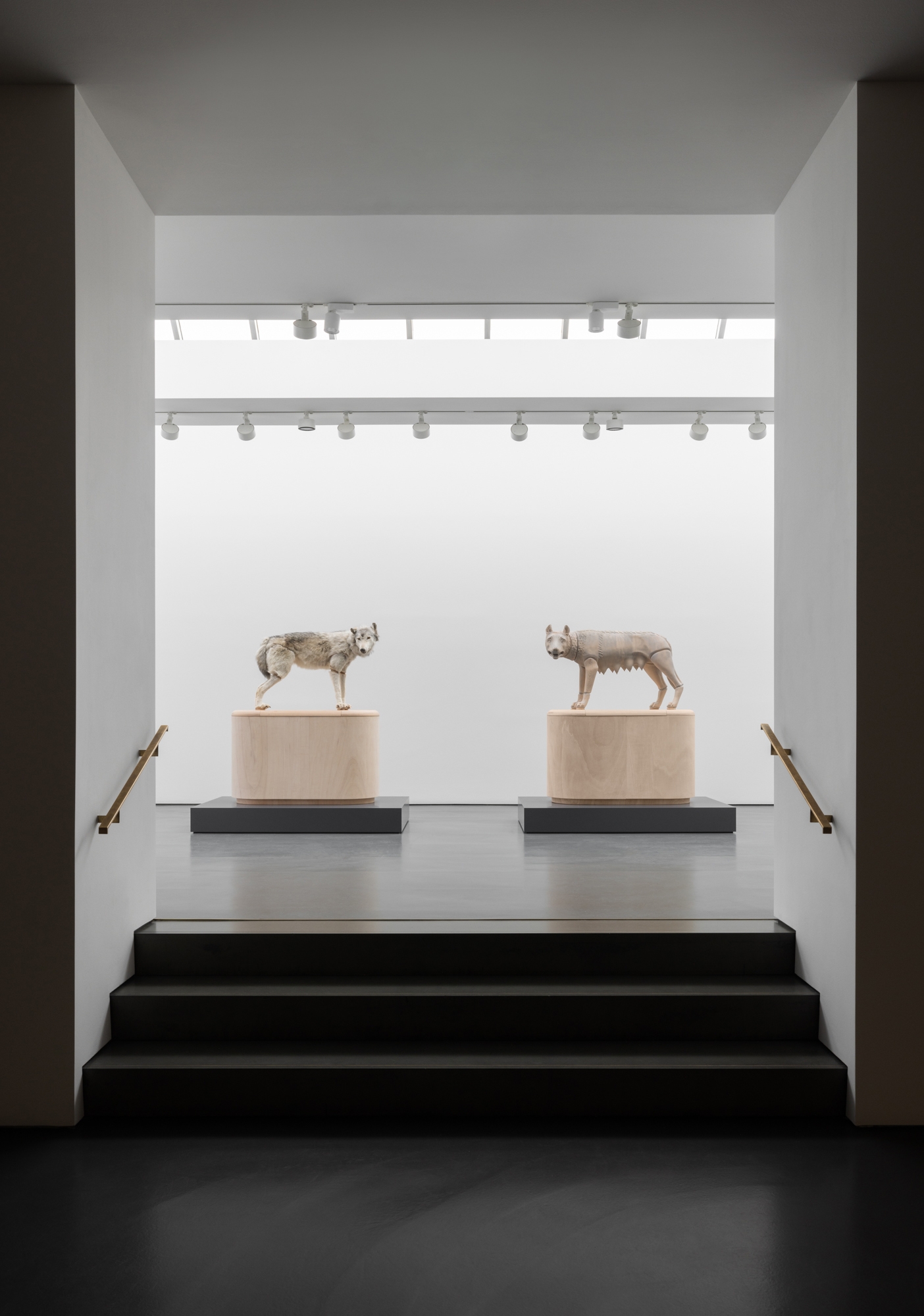
Zwei Wölfinnen, installation view Esther Schipper, Berlin. Photo: Andrea Rosetti, 2024.